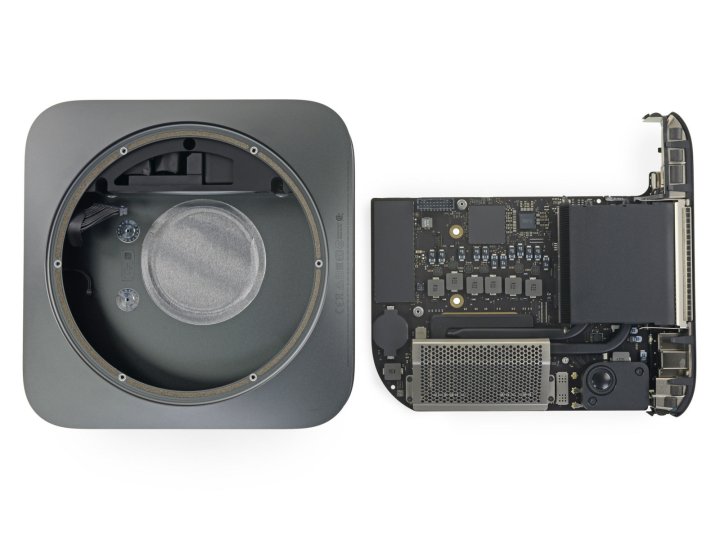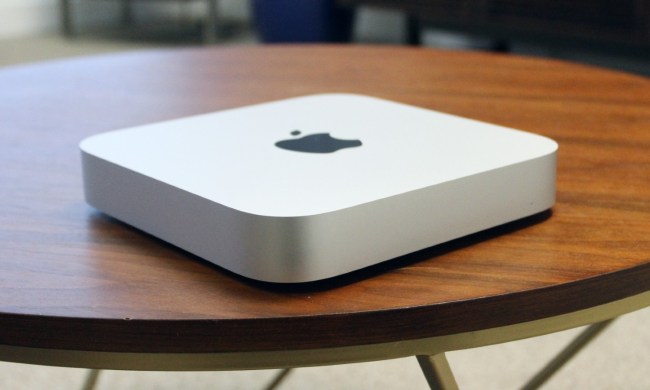
The first 2018 Mac minis shipped out to consumers this week, and though the design is the same as the previous generation, some subtle changes have made the device just a bit easier to fix. Repair website iFixit has taken on its usual project of dismantling the Mac mini portable desktop computer, and the new device earned a very high repairability score of 6 out of 10.
A straightforward disassembly process, the return to user-upgradable RAM, and the lack of adhesives and glue are the key factors in the high repairability score. Unfortunately, the CPU, Apple T2 security chip, and the storage are all still soldered to the logic board on the new Mac mini.
That means the device isn’t 100 percent upgradable, like an Intel NUC, for example. All of the ports also are also trapped into the logic board, so if something happens to break or get stuck in one of the new Thunderbolt 3 USB C ports, a self-fix is out of the picture.
“Back in the day, a Pro Mac meant a computer you could upgrade, configure, and connect as you pleased. This new mini aligns so well with that ideal that we’re surprised it didn’t earn itself a “Pro” title — especially compared to the increasingly closed-off MacBook Pro line,” iFixit reported.
Just as with previous Mac minis, iFixit found that the dismantling process on the new model is simple. Digging inside involves simply removing the plastic bottom cover and then unscrewing the antenna. Removing the logic board requires no tools. The main board simply slides out from the rest of the device with the nudge of a finger, allowing access for upgrading the RAM.
The rest of the device isn’t as modular as many expect, and removing other components like the power supply and speakers involve moving cables and Torx screws. That might be something out of the scope for general consumers, but easy for DIY experts.
A 6 out of 10 score puts the Mac Mini ahead of many of Apple’s other devices. The new MacBook Air achieved a score of 3 out of 10 for its modular components, but that is still a far ways from the Mac Pro, which set an all-time high for repairability.


